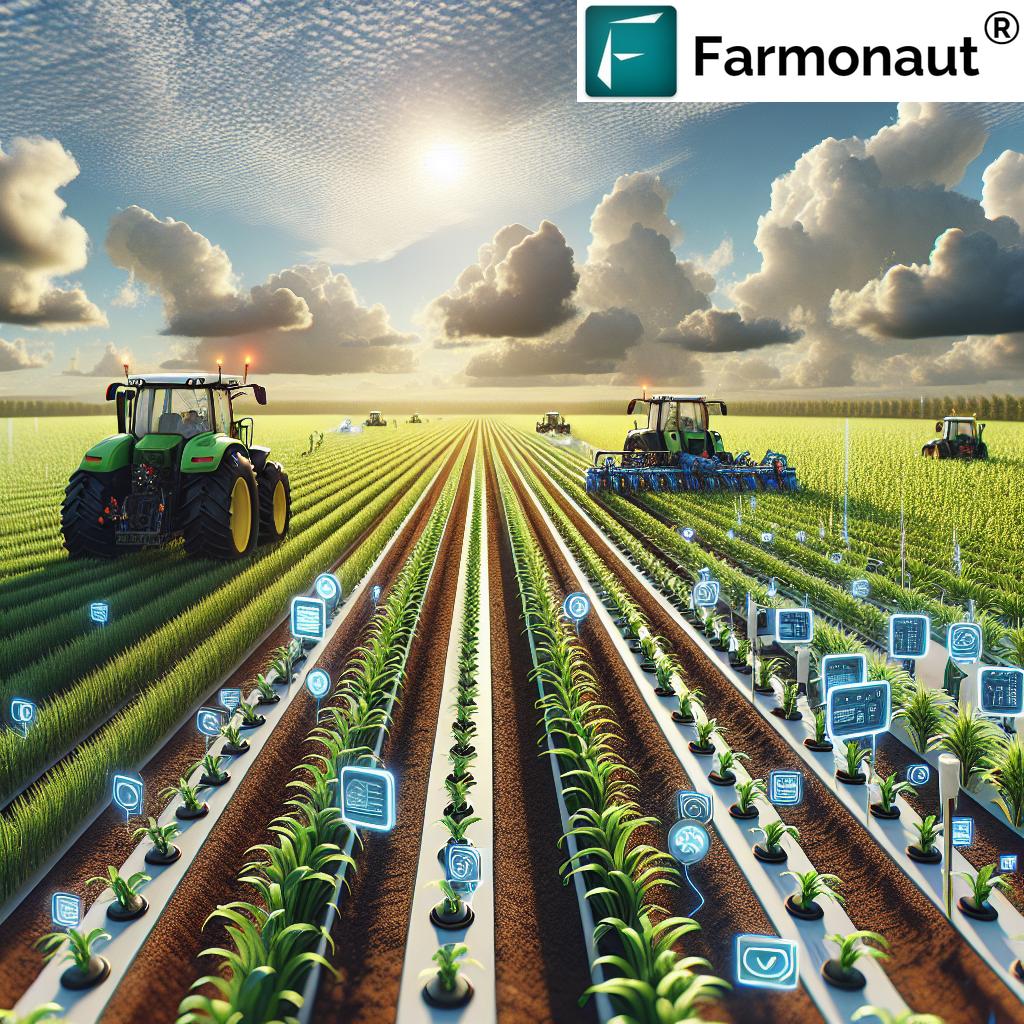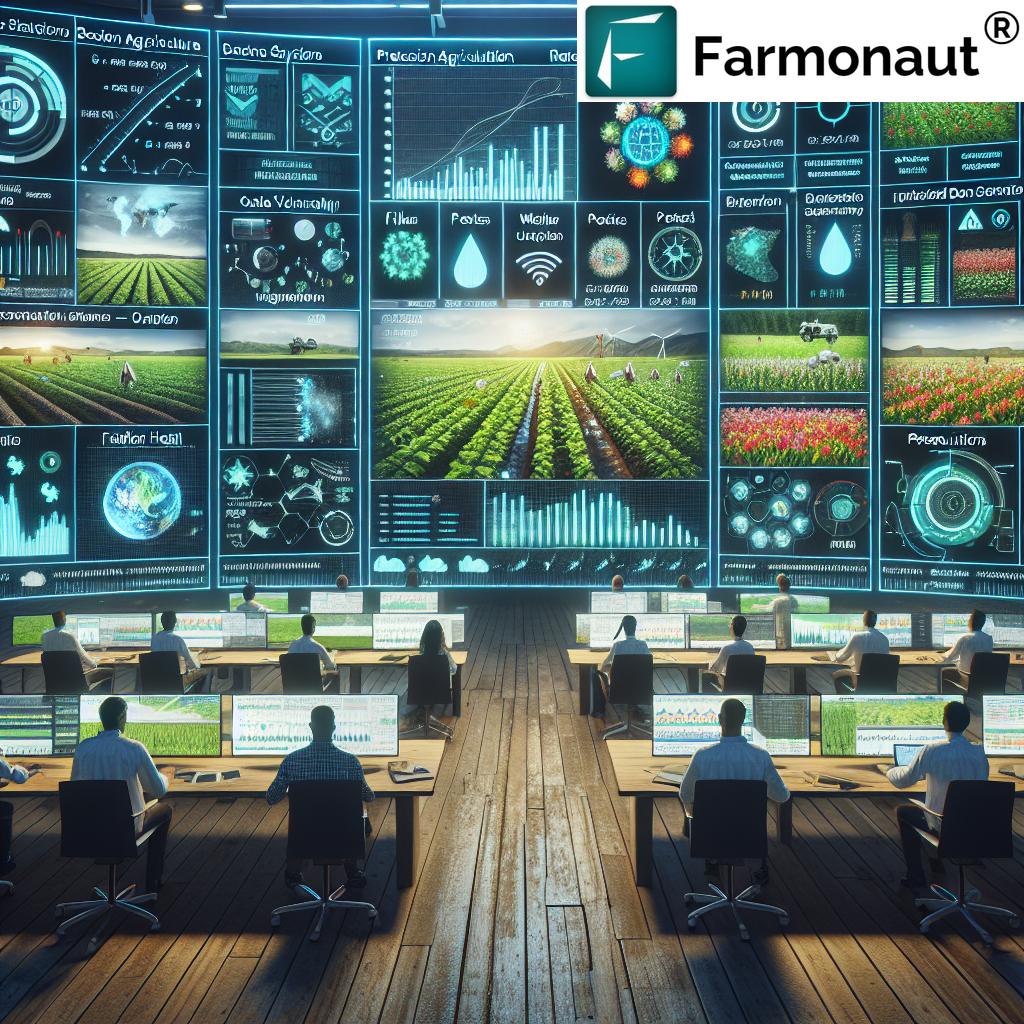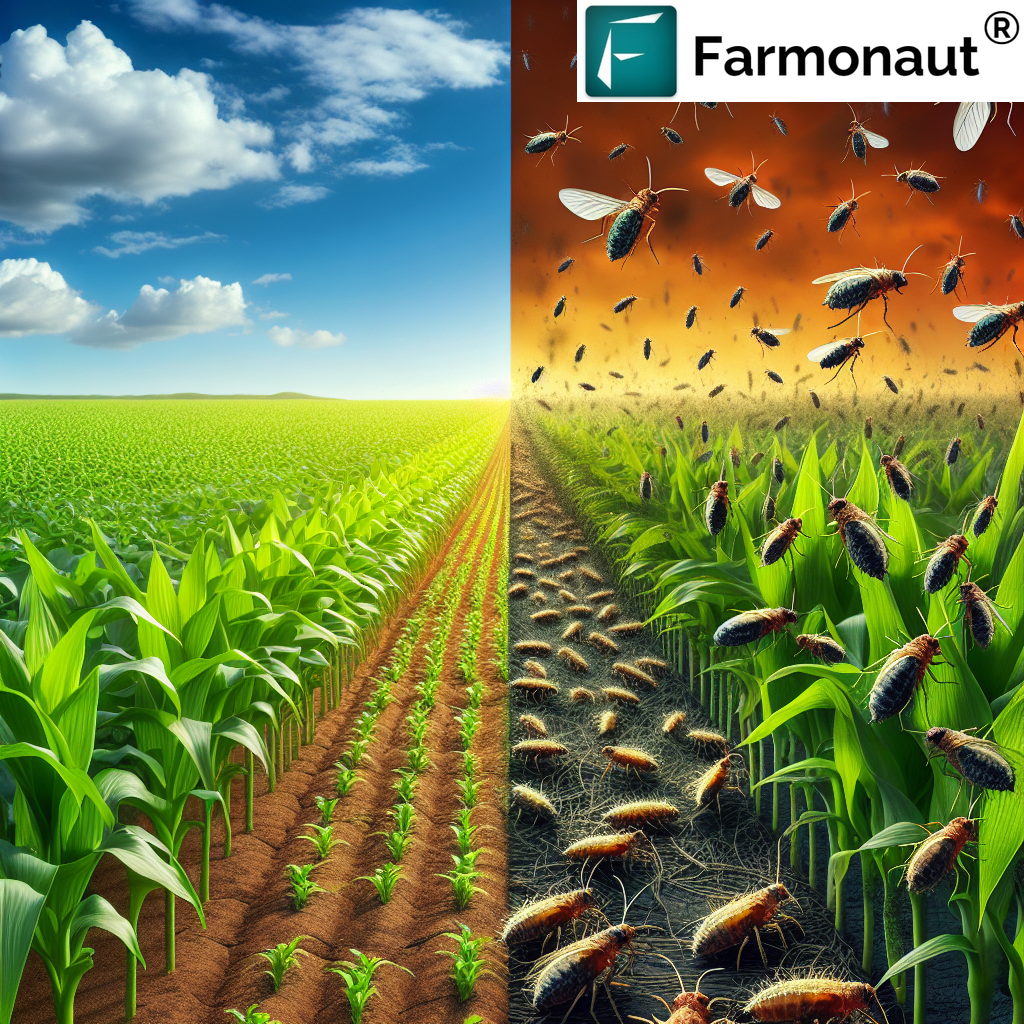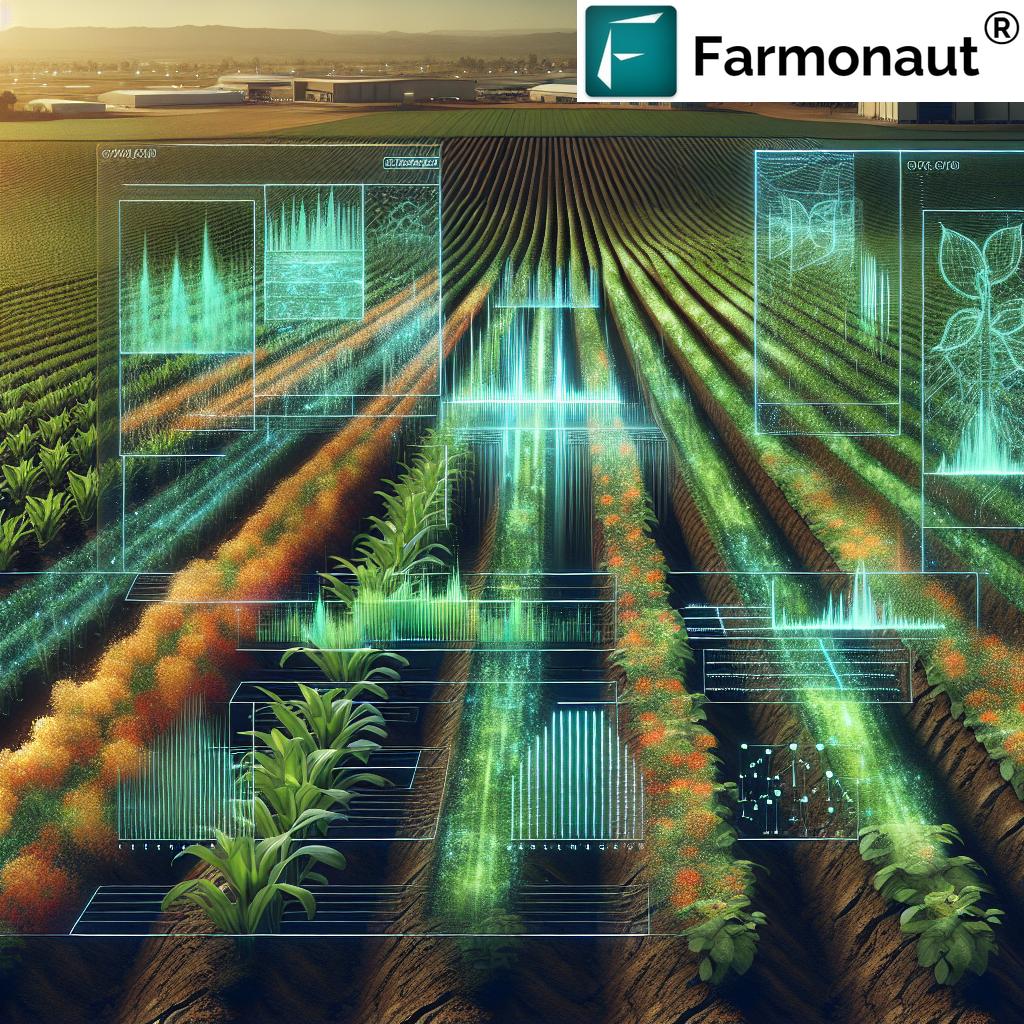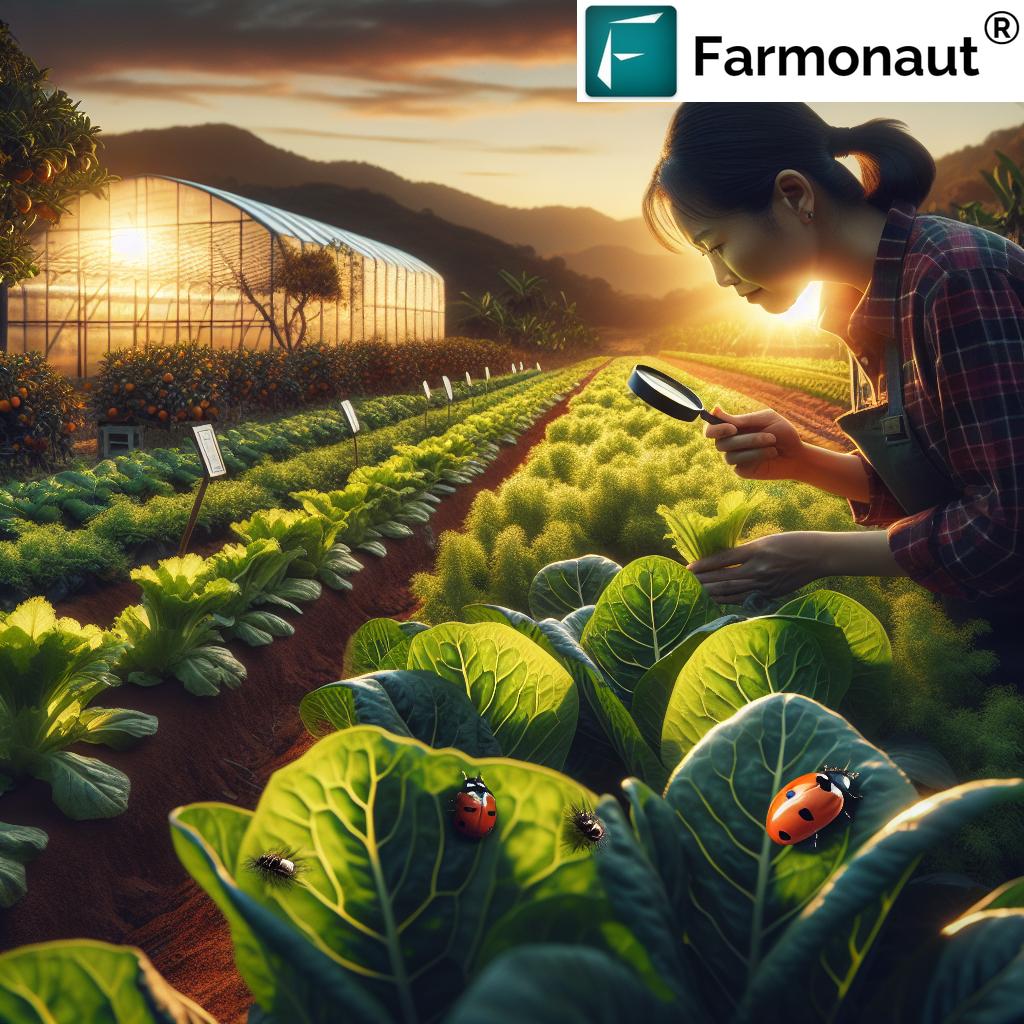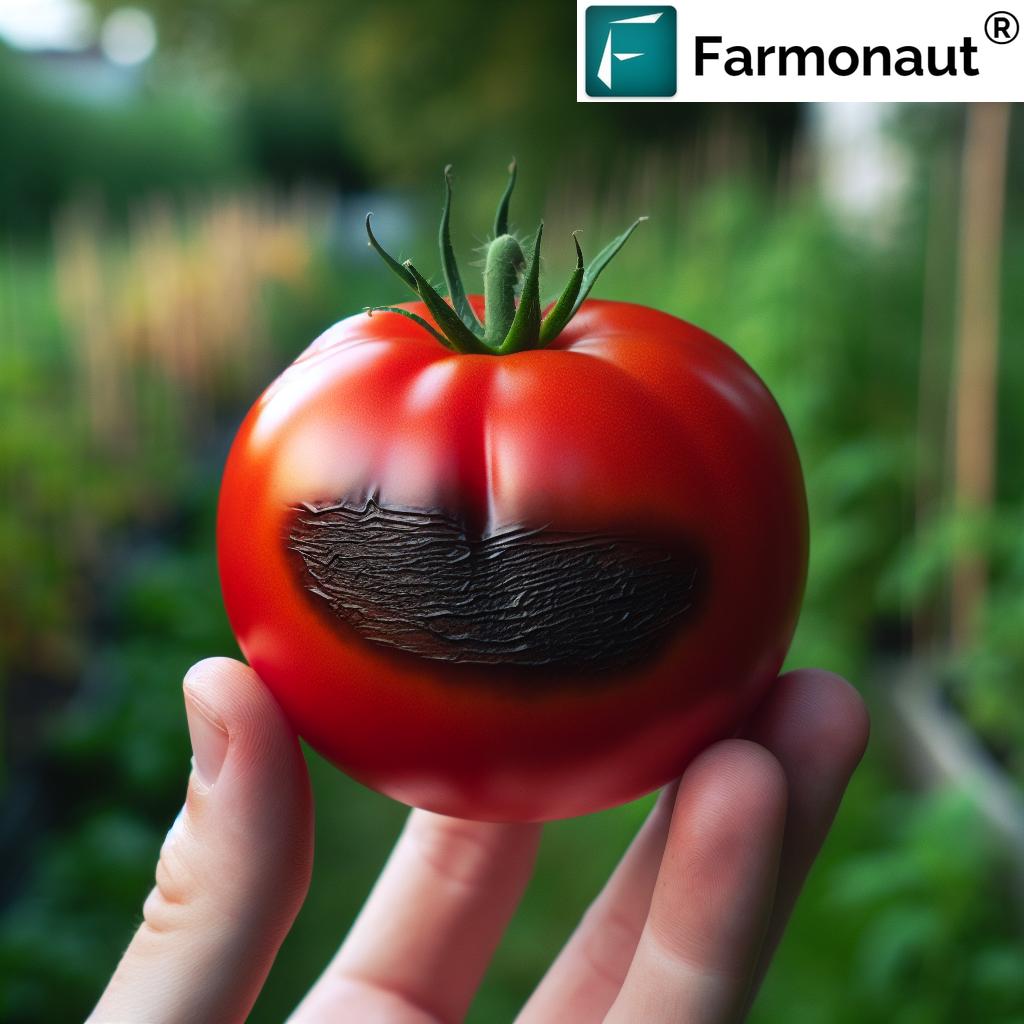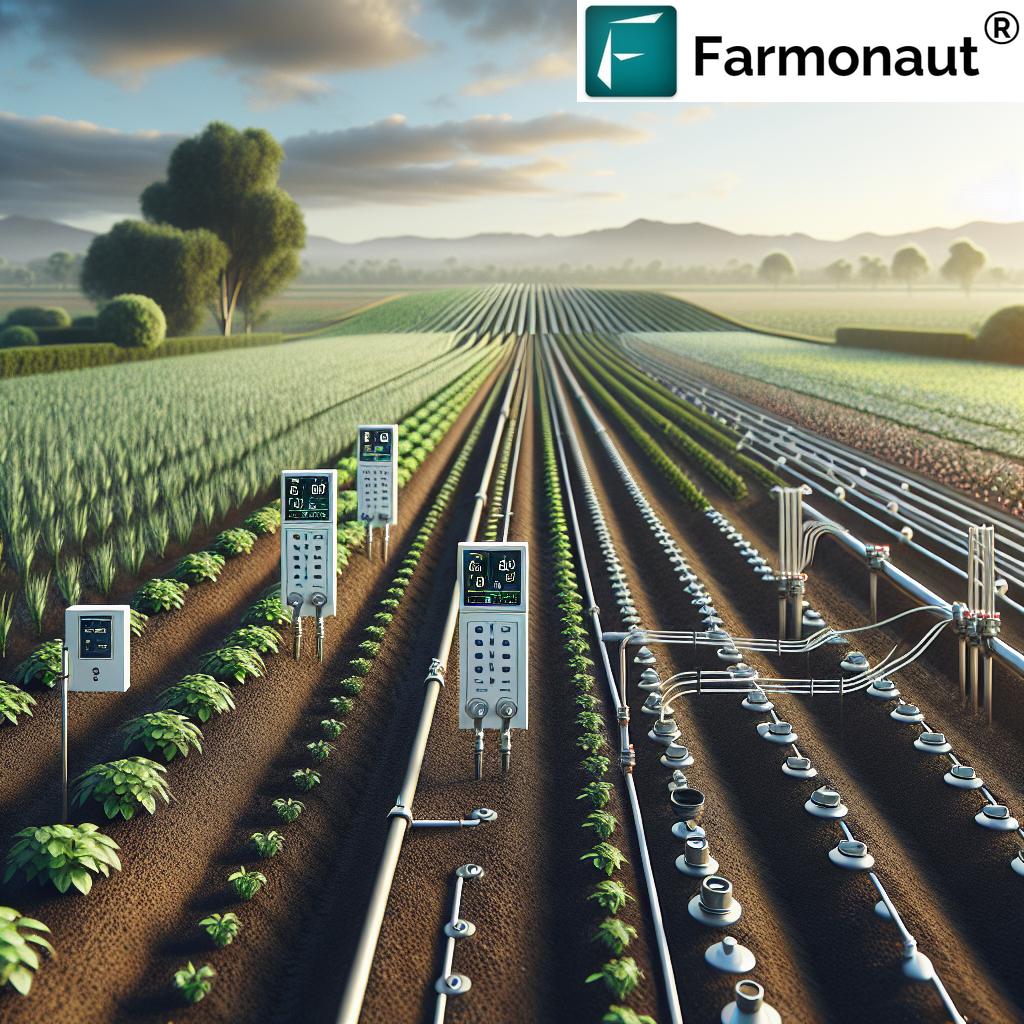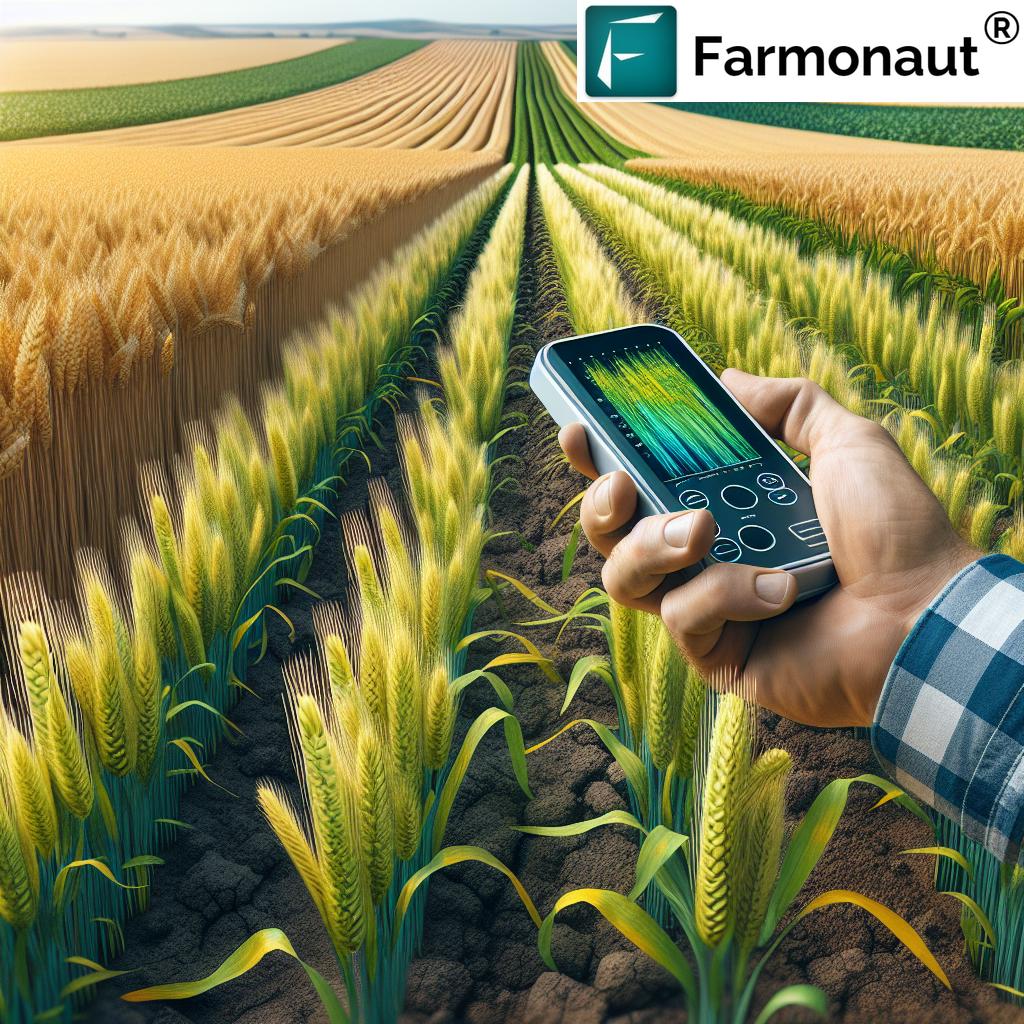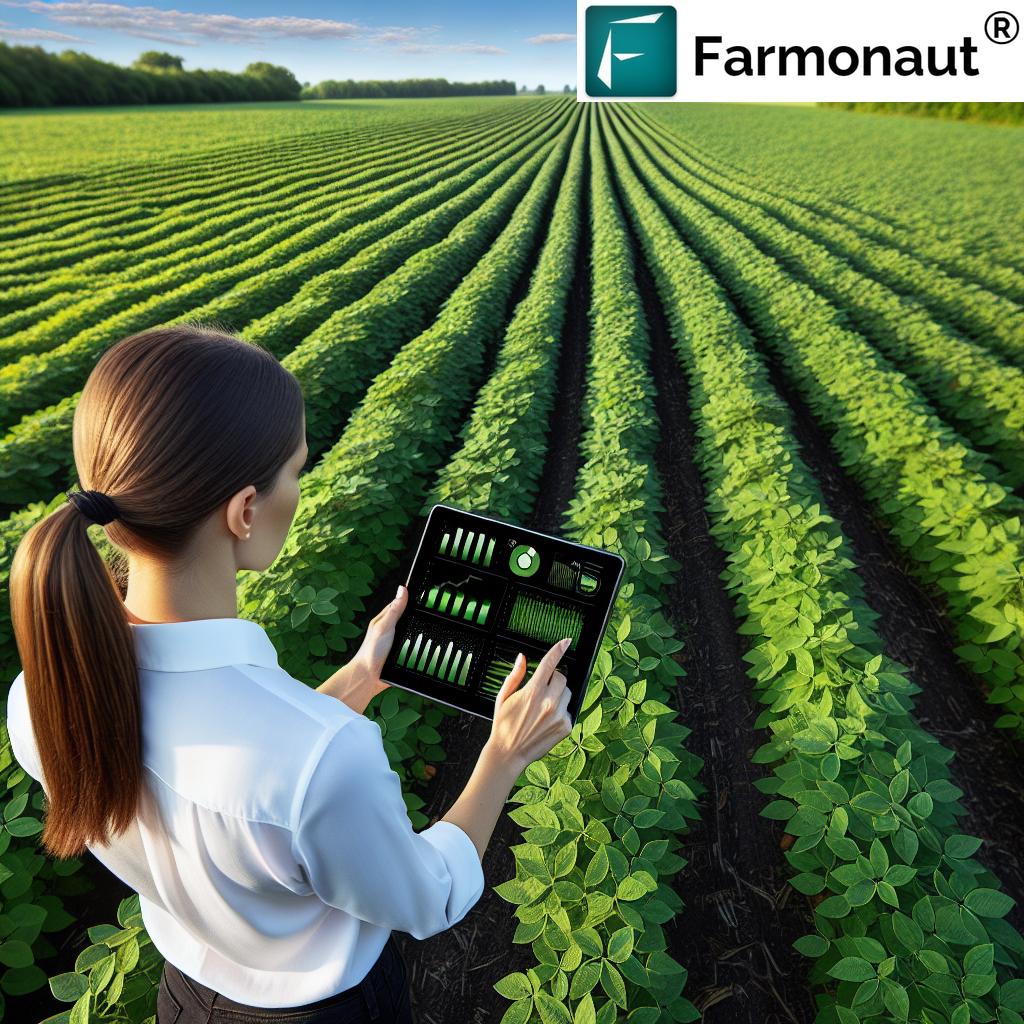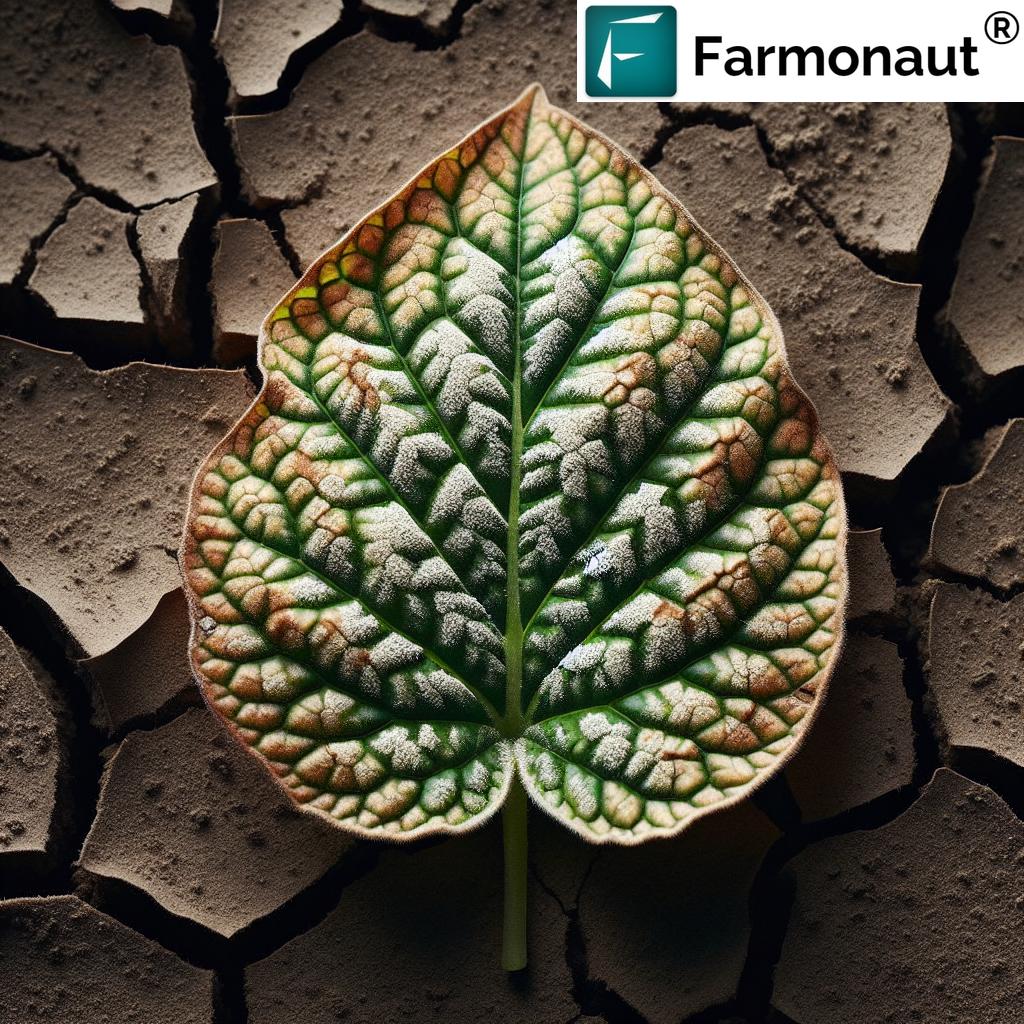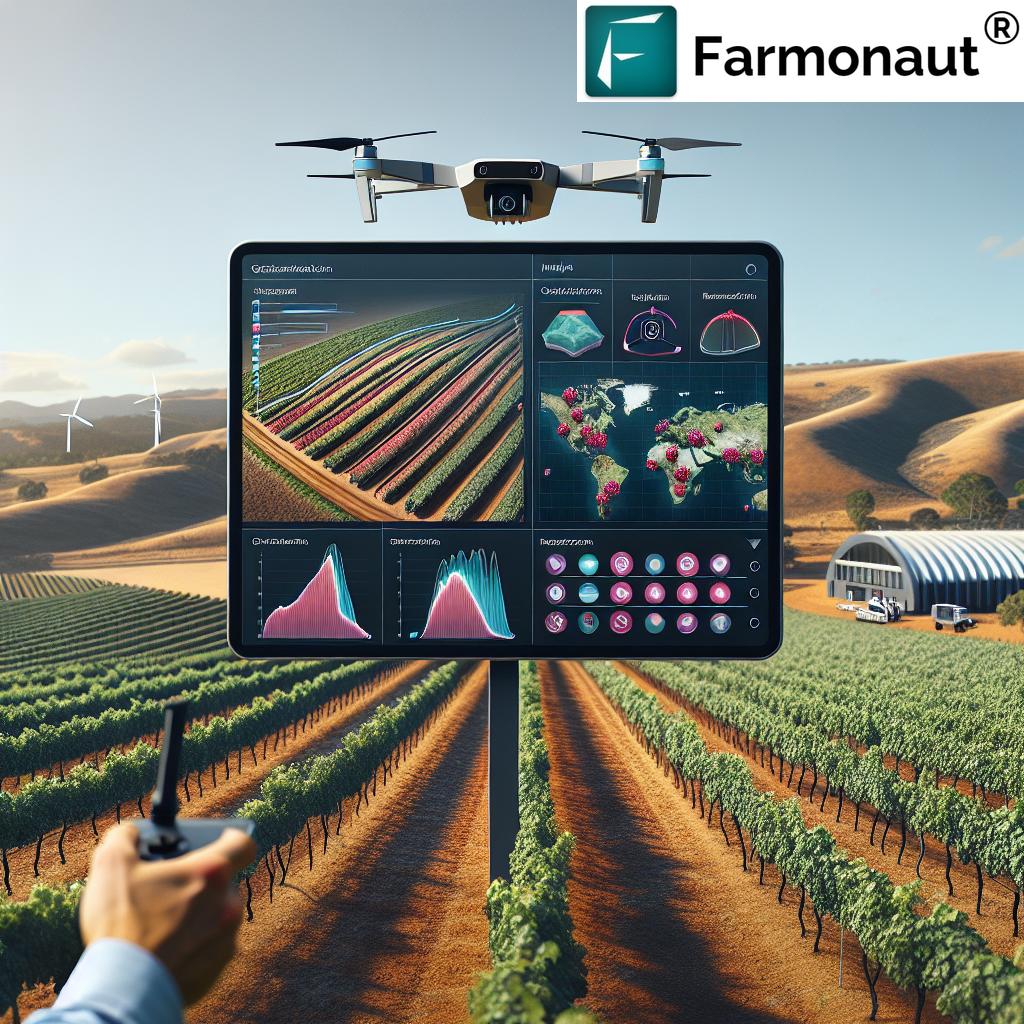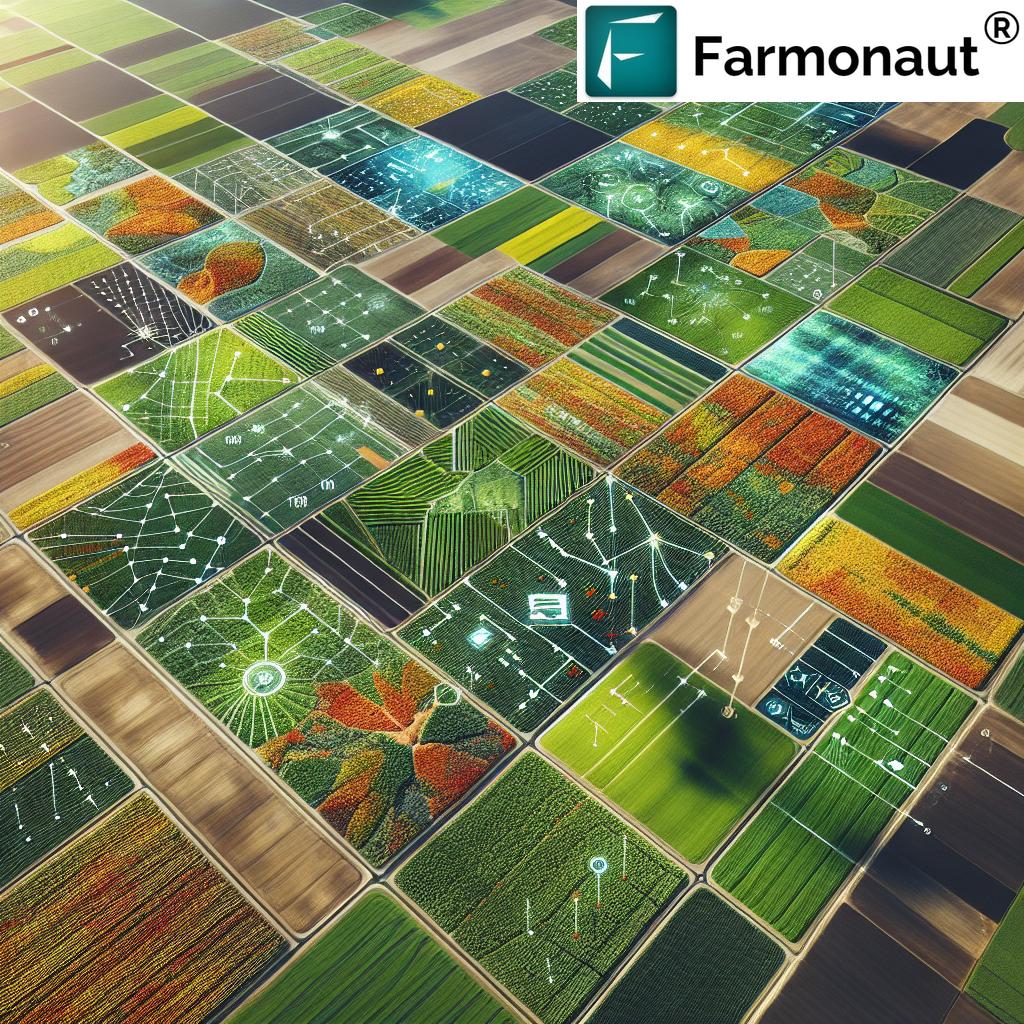Agricultural Technology: 10 Shocking Smart Farming Hacks
“Precision agriculture can increase crop yields by up to 20% using data-driven soil and weather analysis.”
As the global population expands and the demands of sustainable food production intensify, agricultural technology has become the foundation of modern, innovative farming practices. Here, we explore ten truly shocking and transformative smart farming hacks. These advancements—from precision agriculture systems and drones to AI-driven crop health monitoring and blockchain-based food traceability—are revolutionizing yield optimization, soil health, and the sustainability of our global food supply.
Join us as we journey from ancient implements to advanced digital solutions—discovering the future of agricultural productivity, efficiency, and resilience, powered by real-time data and intelligent technologies.
Table of Contents
- Historical Evolution of Agricultural Technology
- 10 Shocking Smart Farming Hacks
- Comparison Table of Smart Farming Hacks and Their Estimated Impact
- Farmonaut’s Innovations: Smart Farming Elevation
- Challenges and Considerations in Agricultural Technology
- The Future of Agricultural Technology
- FAQ: Agricultural Technology & Smart Farming
Historical Evolution of Agricultural Technology
Before we unveil the top 10 smart farming hacks, let’s travel through the timeline of agricultural technology—a journey that began with ancient implements and now brims with modern digital solutions:
- Early Implements: The fundamental plow and irrigation systems allowed greater cultivation and higher crop yields.
- Industrial Revolution: The invention of mechanized equipment like tractors and combine harvesters drastically cut manual labor while boosting productivity and agricultural scale.
- Green Revolution (Mid-20th Century): Advancements in chemical fertilizers, pesticides, and engineered high-yield crop varieties transformed the global food system.
- Information Age: The turn of the millennium brought satellite-based monitoring, AI-driven analytics, and precision irrigation, ushering in real-time, data-centric farming.
Today, agricultural technology integrates digital platforms, IOT, blockchain, machine learning, and more, establishing a robust foundation for resilient, sustainable farming practices globally.
10 Shocking Smart Farming Hacks Optimizing Agriculture
From precision agriculture to blockchain in agriculture, these ten hacks are turning farms into high-tech, highly-productive, and sustainable food factories:
1. Precision Agriculture: GPS-Driven Decisions
Precision agriculture harnesses GPS, GIS (Geographic Information Systems), and remote sensing to manage intra-field variability and optimize resource use. By collecting high-resolution data on soil conditions, crop health, and environmental factors, we’re able to plant, irrigate, and fertilize with surgical accuracy.
- Benefit: Increased yields (up to 20% improvement possible), reduced input waste, improved soil health.
- Key Tools: GPS-equipped tractors, yield mapping, variable-rate application systems.
- Use Case: Targeted application of fertilizers and pesticides prevents overuse and runoff, safeguarding environment.
2. Autonomous Machinery & Agricultural Robotics
The rise of autonomous machinery and robotics in agriculture is remarkable. Self-driving tractors and harvesting robots rely on advanced sensors and AI to complete routine tasks—planting, weeding, soil analysis—with minimal human input.
- Advantage: Efficient planting and harvesting schedules, reduced labor dependency, consistent performance even in adverse conditions.
- Sustainable Angle: Automated weeders, like those using computer vision, eliminate unwanted plants without chemicals, supporting natural soil health.
3. Drones in Agriculture: Eye in the Sky
Drones in agriculture have redefined monitoring and data collection. Using multispectral sensors, UAVs provide real-time imagery to track plant health, pest infestations, and soil moisture levels.
- Standout Features: Wide field coverage, high-frequency data, rapid detection of anomalies (pest, nutrient, or disease).
- Optimization: Early diagnosis enables precise intervention and maximizes yields.
- Advanced Application: Spraying fertilizers or pesticides with accuracy, reducing operator exposure and input waste.
4. IoT in Agriculture: Connected Farm Networks
IoT (Internet of Things) in agriculture establishes connected networks of sensors, devices, and data processing systems for live field monitoring. Soil moisture, temperature, and nutrient levels are instantly measured and analyzed.
- Efficiency: Automated irrigation based on actual soil moisture readings conserves water and prevents over- or under-watering.
- Platform Spotlight: Our own Farmonaut platform empowers farmers to track moisture and crop health from any smart device.
Explore the Farmonaut Satellite API
for seamless farm data and weather integration into your own applications or agri-research systems.
Check the Developer Docs here.
5. AI & Machine Learning in Smart Farming Solutions
Artificial Intelligence in farming and machine learning algorithms are capacity-multipliers for farmers. From weather prediction to yield forecasting and pest detection, AI transforms raw data into actionable intelligence.
- Example: AI models predict local weather patterns and suggest optimal planting times, helping farmers reduce debt and maximize their production.
- Tool Highlight: Farmonaut Jeevn AI Advisory System delivers real-time, customized strategies for smarter, more informed decisions.
6. Soil Health Monitoring & Nanosensors
We know that healthy soil is the bedrock of sustainable food production. Nanosensors and advanced soil analysis tools now deliver real-time insights into nutrient levels, moisture, pH, and trace element profiles.
- Precision Benefit: Targeted fertilizer applications improve crop yields while avoiding input waste or environmental contamination.
- Innovative Solutions: Multispectral satellite imaging—like that offered by Farmonaut’s platform—enables crop health and soil moisture monitoring even at large scales.
-
Explore:
Farmonaut Carbon Footprinting Solutions
for tracking and reducing your agro-environmental impact.
7. Blockchain in Agriculture: Traceability & Trust
Blockchain in agriculture finally resolves the need for accurate, transparent, and secure data sharing along the food supply chain. Every step—from planting to harvest, processing, and sale—is logged on an immutable digital ledger, ensuring authenticity.
- Impact: Enhanced food safety, reduced fraud, and fairer transactions between farmers, suppliers, and consumers.
- Tech Spotlight: Farmonaut’s blockchain-enabled product traceability platform lets agribusinesses trace goods with confidence.
8. Mobile Agriculture (mAgri) & Digital Advice
Mobile agriculture solutions put vital tools, advice, and market information into the hands of farmers worldwide—especially in developing regions and small holder landscapes.
- Key Functions: Weather alerts, market prices, best-practice tips, and technical hydro-climatic data straight to mobile devices.
-
Smart Farming App:
Farmonaut’s mobile and web platform
empowers farmers to make data-driven choices wherever they are.
9. Advanced Resource & Fleet Management
Managing field machinery, vehicles, and labor-intensive logistics can be daunting. Advanced fleet management tools automate the tracking of tractors, combine harvesters, and support logistics in large or distributed fields.
- Advantage: Reduced fuel use, maintenance costs, and downtime; optimized machinery utilization and safety.
-
Tech Example: Our
Farmonaut Fleet Management module
streamlines agricultural operations, substantially improving ROI for agribusinesses.
10. Sustainable Farming Practices and Carbon Tracking
Ultimately, sustainable farming practices and monitoring your farm’s carbon footprint help us future-proof agriculture.
- How It Works: IoT sensors, satellite analytics (like those by Farmonaut), and AI evaluate sustainability—tracking water use, emission levels, and resource optimization.
- Get Started: Check Carbon Footprinting to measure and improve your farm’s sustainability status.
“Smart farming solutions can reduce fertilizer usage by 15%, optimizing both costs and environmental impact.”
Comparison Table of Smart Farming Hacks and Their Estimated Impact
| Smart Farming Hack | Description | Estimated Yield Increase (%) | Soil Health Benefit (1-5) | Sustainability Impact |
|---|---|---|---|---|
| Precision Agriculture | GPS/GIS-driven resource optimization based on field data | 10–20% | 5 | High |
| Autonomous Machinery & Robotics | Self-driving tractors and robots to perform routine tasks | 8–15% | 4 | High |
| Drones in Agriculture | Aerial crop monitoring, pest detection, and precision spraying | 10–18% | 4 | Medium |
| IoT in Agriculture | Sensor-driven, automated field monitoring and responsive systems | 12–16% | 5 | High |
| AI & Machine Learning | Predictive analytics, pest & yield forecasting, data-driven farming | 8–15% | 4 | High |
| Soil Health Monitoring & Nanosensors | Real-time soil and nutrient monitoring for targeted fertilization | 12–20% | 5 | High |
| Blockchain in Agriculture | Secure, transparent product traceability in supply chains | 3–7% | 3 | Medium |
| Mobile Agriculture (mAgri) | Apps/services providing market, weather, and agronomic info | 6–12% | 3 | Medium |
| Resource & Fleet Management | Automation of machinery and logistics operations | 5–10% | 4 | Medium |
| Sustainable Practices & Carbon Tracking | Carbon footprint measurement and sustainable resource strategies | 8–14% | 5 | High |
Farmonaut’s Innovations: Smart Farming Elevation
As a leader in agricultural technology, Farmonaut delivers precision, data-driven agriculture tools and insights worldwide. Our platform synergizes satellite imagery, AI, and blockchain to support every link in the modern food system—from large-scale agribusiness to smallholder farms and government agencies.
- Crop Health and Soil Monitoring: Farmonaut’s satellite-based crop health monitoring generates NDVI plant growth maps, tracks soil moisture levels, and identifies potential pest outbreaks. This empowers us to optimize our resource allocation and boost yields.
- Jeevn AI Advisory System: Our personalized, AI-driven advisory analyzes satellite and weather data, delivering expert guidance for efficient planting, irrigation, and input application.
- Blockchain Traceability: By leveraging blockchain in agriculture, we ensure secure, transparent supply chains—addressing the critical consumer demand for food safety and authenticity.
- Resource & Fleet Management: Fleet management tools help businesses minimize operational risks, reduce costs, and improve sustainability.
- Carbon Footprint Tracking: With carbon assessment tools, we actively monitor and reduce our environmental impact.
- Access and Flexibility: Farmonaut’s app is available for web, Android, and iOS, along with a powerful API (API Access).
- Large-Scale and Collaborative Management: For NGOs and government operations, our large-scale farm management tools deliver real-time oversight and support for complex projects.
Challenges and Considerations in Agricultural Technology
While these technologies set new benchmarks, adoption is not without hurdles. For farming systems to reach their potential, we must address:
- Cost and Accessibility: Initial investment and tech know-how can put smart farming solutions out of immediate reach for smallholder farmers and those in developing regions.
- Data Privacy & Security: Intensified monitoring and data sharing demand rigorously enforced privacy protocols.
- Environmental Impact: Electronic waste and the life cycle of digital devices must be considered as we transition to high-tech agriculture systems.
- Labor and Social Dynamics: Automation may impact rural employment, requiring thoughtful strategies for upskilling and role transitions.
The Future of Agricultural Technology
The horizon of agricultural technology glows with potential. Here’s what we anticipate:
- Synergistic Integration: Combining AI, IoT, robotics, and blockchain will produce seamless smart ecosystems for everything from soil management to supply chain verification.
- Regenerative Agriculture: Innovative practices will prioritize soil carbon renewal, biodiversity, and long-term ecosystem health.
- Global Collaboration: Knowledge sharing and accessible technology will dissolve borders, helping regions facing acute climate change or food insecurity.
Ultimately, modern agricultural technologies promise to make farming more efficient, sustainable, and resilient for generations to come—delivering nutritious food to a growing population.
FAQ: Agricultural Technology & Smart Farming
What is agricultural technology, and why is it important?
Agricultural technology refers to the use of advanced tools, systems, and practices—including digital solutions, sensors, AI, and automation—to increase the efficiency, productivity, and sustainability of farming and food production. It’s essential for meeting the demands of a growing global population and the challenges posed by climate change, soil degradation, and resource scarcity.
How does precision agriculture increase crop yields?
Precision agriculture uses GPS, GIS, remote sensing, and real-time data to identify variability in soil, moisture, and crop health. This enables targeted application of inputs (like water and fertilizers), reducing waste and increasing the effectiveness of interventions, typically raising yields by 10-20%.
What role do drones in agriculture play in modern farming?
Drones enable rapid, precise monitoring of large fields. They help detect issues like pest infestations, water stress, or nutrient deficiencies early, allowing for timely, site-specific responses that boost productivity and reduce resource usage.
How do blockchain and IoT benefit the supply chain?
Blockchain in agriculture ensures transparent, tamper-proof traceability from farm to table, building consumer trust and managing quality. IoT devices automate live field monitoring, transmit accurate data, and enable responsive systems for things like irrigation, fleet, and resource management—making supply chains more efficient.
How can I get started with Farmonaut’s smart farming solutions?
Download the Farmonaut app (available for Web, Android, and iOS) to begin monitoring your farm using satellite imagery, AI advisory, blockchain traceability, and resource management—no extra hardware needed!
What is the value of soil health monitoring and nanosensors for small holder farmers?
Real-time soil and crop health monitoring enables even smallholder farmers, especially in resource-constrained regions, to minimize input costs, avoid unnecessary fertilizers or pesticides, and boost sustainable crop yields.
Start Your Smart Farming Journey
Armed with these ten smart farming hacks, we’re ready to optimize every aspect of field management, resource allocation, and supply chain efficiency. Whether you’re a tech-savvy agribusiness, a government institution, or an ambitious smallholder, agricultural technology offers scalable, cost-effective, and sustainable solutions.
Ready to transform your farm? Click here to start using Farmonaut’s platform, and unlock powerful precision agriculture services—no specialist hardware required.
In summary, agricultural technology is more than just a buzzword—it’s the engine driving a quantum leap in farm productivity, soil health, and sustainability. By embracing innovative tools like AI, drones, IoT, and blockchain, we can meet the urgent demands of a changing climate and a growing population—ensuring a healthier, more prosperous future for farmers and consumers alike.





